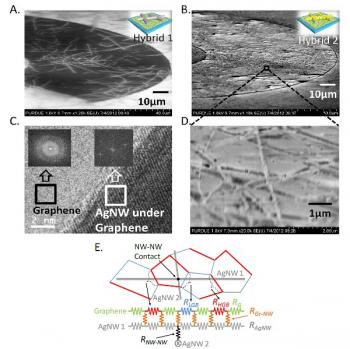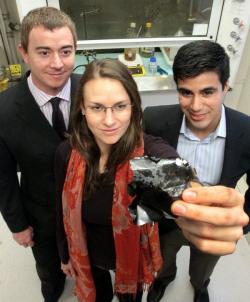Graphene used as bottom and top electrodes in new flexible and transparent memory device
Researchers from Korea's Sungkyunkwan University developed a highly flexible and transparent memory device using graphene electrodes (both and anode and the cathode). This is the first time graphene is used for the bottom electrode in such a device, and this was achieved by using a chemical union of the bottom electrode with the molecular film of organic molecules (which is placed between the two electrodes).
This is not the first graphene based flexible memory device. In October 2012 researchers from Rice University developed highly transparent (95%), flexible, nonvolatile resistive memory devices based on silicon oxide (SiOx) and graphene. In March 2013 Researchers from EPFL designed a new flexible, small and fast flash memory cell prototype from graphene and Molybdenite (MoS2).




